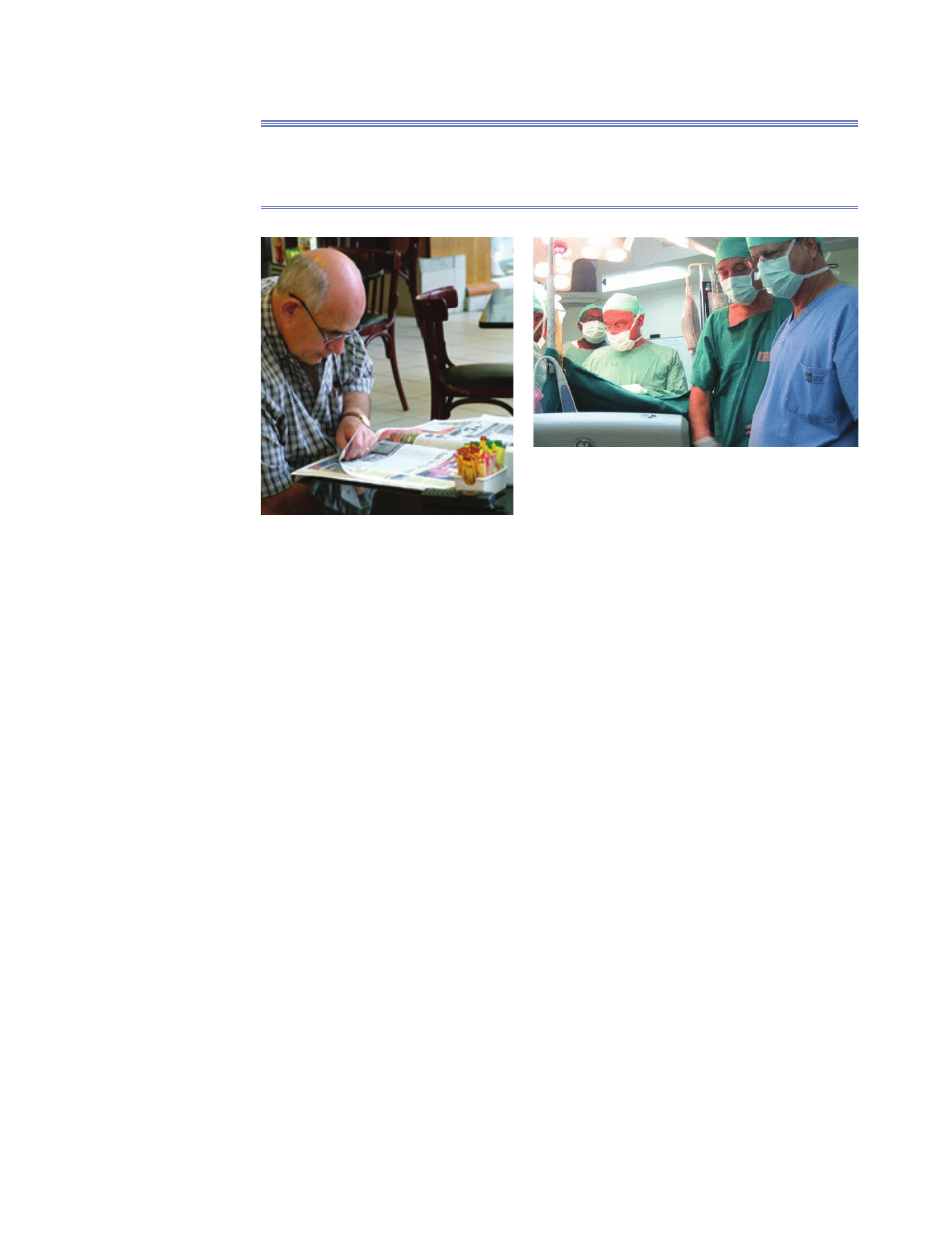D.5 lighting systems – Retrotec USACE User Manual
Page 218

D88 ENERGY & PROCESS ASSESSMENT PROTOCOL
D.5 Lighting Systems
D.5.1 Having More Light in Space Than Is Necessary to Perform
the Task (Waste)
Figure D142. Offi ce worker reading (left); surgery
room (above).
Different visual tasks require different amounts of light for adequate visual per-
formance (Figure D142). “Adequate” means that there is “enough” light required
to perform a visual task without introducing risks associated with performing
suboptimally due to “not enough” lighting. The IES has defi ned recommended
levels of light for many tasks. For example, the IES recommends 322.8 lux (30
footcandles) (horizontal) for normal reading in an offi ce. The IES also recom-
mends over 10,760 lux (1,000 footcandles) (horizontal) for performing surgery.
It is possible, perhaps even more enjoyable, to read paperwork under 10,760
lux (1,000 footcandles) of light, but it is not necessary for performing the task,
and the risks associated with making reading mistakes is generally lower than
making surgical mistakes. However, “enough light” is often more of an art than a
science, and applying standards blindly can produce undesirable outcomes. For
example, although the IRS’s employees are performing reading tasks in an offi ce
environment, the IRS requires that its offi ces have 1,076 lux (100 footcandles)
(horizontal), because the consequences of an IRS worker making a numerical
error on a tax return are very serious compared to errors in normal offi ce work.
Some spaces are easily identifi able as being overlit. Corridors in offi ce
spaces are one example, as are lunch break rooms and open offi ce spaces. It is
best to review the IESNA recommendations and then use a light meter to see
whether the spaces you are concerned with are wasting energy by using too
much light. Generally speaking, if your spaces are overlit by, say, 20%, you are
wasting 20% of the energy being used for the lighting.
